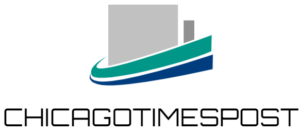In every solar installation, solar charge controllers are very essential to its overall function. They ensure that everything runs effectively and that there are no hinges during the lifespan of the system. This is why sizing a solar charge controller is very important.
For those who don’t have a full grasp of what solar charge controllers are, the mechanism is very simple.
They act as restrictive agents. They stand in between battery and energy sources. They prevent batteries from overcharging and undercharging. They control the rate of battery charge by reducing and sustaining the voltage.
Why are solar charge controllers important?
When there is a battery attached to a solar panel to help it retain energy to be used later, a solar charge controller is needed.
Charge current goes through a semiconductor (this acts like a valve for current control). When it reaches a specific voltage, the charge controllers decrease the flow of energy to the battery so that it doesn’t overcharge.
Overcharging can seriously damage a battery and reduce its life.
Other ways charge controllers help
1. Prevents overload
When the current flowing into a battery is higher than the capacity of the circuit, the system will overload. This could have dangerous consequences like overheating or sudden fires. These controllers stop these from happening
2. They stop reverse currents
Solar panels transmit current mono-directionally. However, the panels may transmit some of the currents in the opposite direction at night. The controllers prevent this by serving as a valve.
What are the different types of solar charge controllers?
We have two major ones- PWM and MPPT solar charge controllers. The PWM charge controllers are usually inexpensive and less efficient. It is often used for small-scale systems.
This is why it is recommended that you go for the MPPT charge controllers because they are an advanced technology, especially EPever MPPT controllers. It utilizes the full power of the solar panels to charge the batteries. It also monitors the input so that it can control the current.
Sizing a solar charge controller
When it comes to sizing a solar charge controller, you have to know whether it’s a PWM or MPPT controller. An inappropriately sized controller could lead to a 50% loss in generated power.
Generally, sizing is straightforward and precise. The sizing depends on the solar system’s voltage and the array’s current. What you want is a charge controller that can deal with the amount of power and current produced by the solar panels.
Normally, charge controllers are manufactured in 12V, 24V, and 48V. The ampere rating is usually between 1 to 60 amperes, while the voltage rating is between 6 to 40 volts.
So, let’s assume the system volts is 12 and you have 14 amps, technically your solar charge controller will also be 14 amps. Now, we can’t use exactly 14 amps due to environmental factors. There needs to be an additional 25%, so the amps should be about 17.5
Therefore, you will need a 12V and 20-amp controller.







